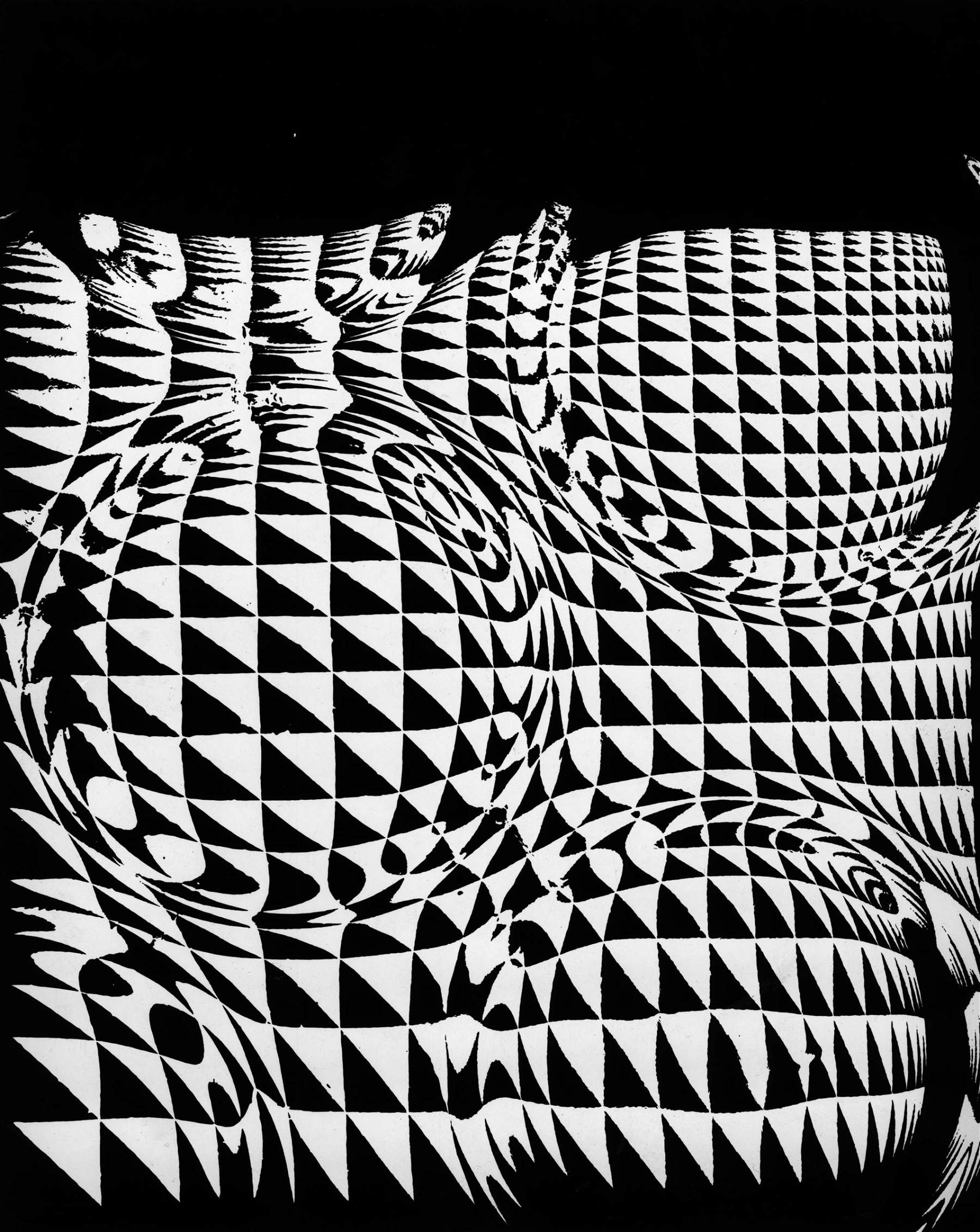Franco Grignani's optical (and other) experiments on display in Chiasso
The m.a.x. museum in Chiasso (Canton Ticino, Switzerland) is hosting the exhibition Franco Grignani (1908-1999) from February 17 to September 15, 2019. Polysensoriality between Art, Graphics and Photography, an anthological exhibition that embraces all the areas explored by Franco Grignani (Pieve Porto Morone, 1908 - Milan, 1999) during his career, from graphics to design, from photography to painting and sculpture. The exhibition, curated by Mario Piazza and Nicoletta Ossanna Cavadini, presents more than 300 works (including photographic images, pictorial works, logotypes, original materials related to graphics and advertising communication, and design objects), from his early photographic experimentation to advertising graphics and Optical Art.
Franco Grignani was an artist who moved on the thin boundary that links art, design and graphics, which consecrated him as one of the most profound innovators of the twentieth century, an absolute precursor of optical-visual art, as well as one of the most appreciated graphic designers of the second half of the twentieth century, to whom we owe the creation of the brand of Pure Virgin Wool. The exhibition is the result of a long scientific research conducted in the Franco Grignani archive, as well as in the funds of MUFOCO - Museum of Contemporary Photography in Cinisello Balsamo (MI), the Italian Association of Visual Communication Design AIAP and in important Italian and Swiss private collections.
Born in 1908 in Pieve Porto Morone, in the province of Pavia, Grignani approached art at an early age. As early as the late 1920s he began to engage in innovative experimentation, partly through the use of the camera. In the middle of the last century, Grignani discovered the linguistic possibilities of photography, pushing into the territory of abstraction, apparently foreign to that discipline. A number of examples from those years will be exhibited in Chiasso, including optical experimentals on emulsified canvas and board and silver bromide salt photographs. These are accompanied by a series of rare natural photographs namely landscapes, city views, characterized by unusual framing.
It was in the immediate post-war period that Grignani alongside his passion for photography devoted himself to that of a graphic designer. In the 1950s he began a very long collaboration with Alfieri & Lacroix, became art director of the magazine “Bellezza d’Italia,” house organ of Dompé Farmaceutici for which he would also be the author of the communication. He is selector, layout designer and author of the covers of “Advertising in Italy.”
During the period of the Italian economic boom, Grignani worked as a graphic designer for large clients such as Pirelli, Arnoldo Mondadori Editore, Fiat, Ermenegildo Zegna, designed trademarks (including Camiceria Cinquini of Bergamo, Chemi, Galleria Peccolo of Livorno, Montesud, Solo Seta Sempre Seta, Aerhotel, Breda Nardi, Ceramiche Falcinelli, Centro Cultura Giancarlo Puecher, Galleria S.Fedele) and edited advertising campaigns. In this area, too, Grignani proved to be a great innovator: to the images that were the subject of the advertisements he used to add writings, somewhere between poetry and storytelling.
With the beginning of the 1970s, Grignani specialized in corporate image, but from the middle of the decade he devoted himself almost exclusively to artistic activity. From this phase of his creative journey, the m.a.x. museum presents some 20 large-scale canvases, from Industrial Glasses to Diacroniche, from Dissociazioni to Periodiche, as well as a few examples of Psychoplastiche, somewhere between painting and sculpture.
The Chiasso exhibition, sponsored by the Consulate General of Italy in Lugano, can count on collaborations with several Italian institutions, such as the Museo della Seta in Como, which will exhibit one of the two silk scarves made for the occasion, and the NABA - Nuova Accademia di Belle Arti in Milan, where Grignani taught starting in the 1980s, which will host an evening of in-depth discussion on his figure.
Accompanying the exhibition is a Skira art editions catalog with essays by Roberta Valtorta on abstract photography, by Mario Piazza on the synaesthetic value of experimentation, by Giovanni Anceschi on optical-mental alterations, by Bruno Monguzzi on the emotional tensions of theentire oeuvre, and by Nicoletta Ossanna Cavadini on the relationship of example to follow for young Swiss graphic artists in the early 1960s and 1970s in the Basel-Zurich-Milan axis of the Kunstgewerbeschule, as well as testimonies by graphic artists whose professional lives have changed as a result of direct acquaintance with Franco Grignani’s work, including Francesco Milani, Heinz Waibl, Laura Michieletto, Lora Lamm, Till Neuburg, Klaus Zaugg, Mario Trueb, Claude Gressli, Nanette Libiszewski, Serge Libiszewski, Ruedi Kuelling, and Bruno Suter. For all info visit the m.a.x museum website.
Pictured: Franco Grignani, Untitled (1950s; silver bromide gelatin/paper, 30 x 24; MUFOCO, Museum of Contemporary Photography)
 |
| Franco Grignani's optical (and other) experiments on display in Chiasso |
Warning: the translation into English of the original Italian article was created using automatic tools. We undertake to review all articles, but we do not guarantee the total absence of inaccuracies in the translation due to the program. You can find the original by clicking on the ITA button. If you find any mistake,please contact us.




























